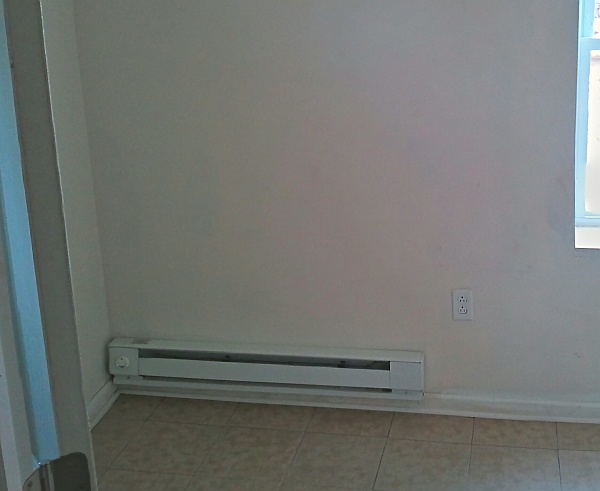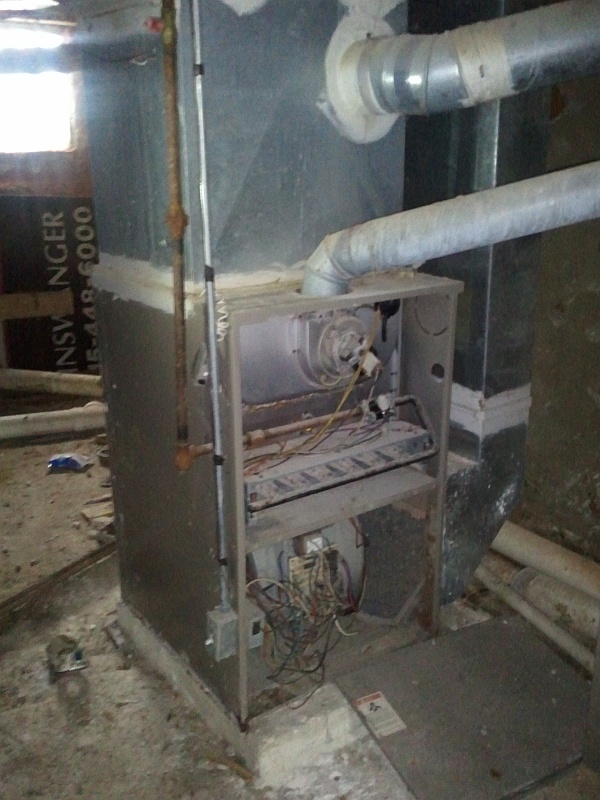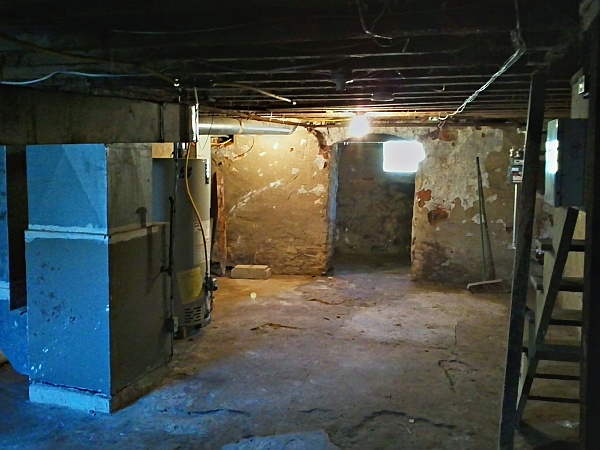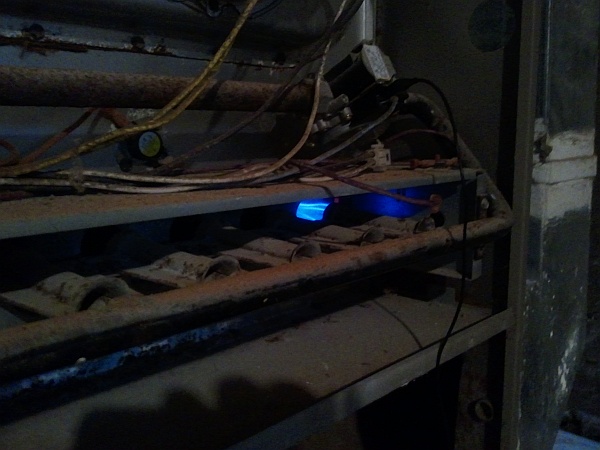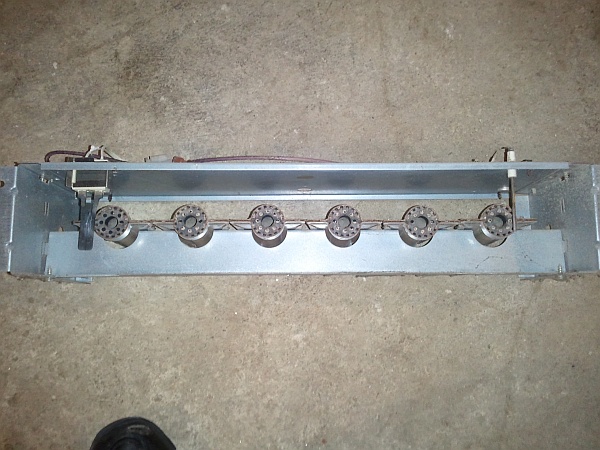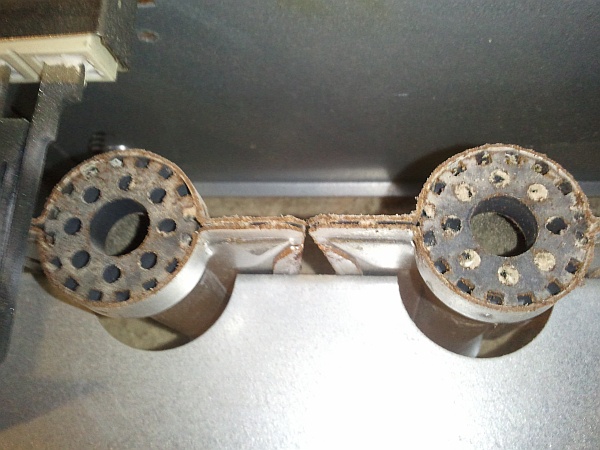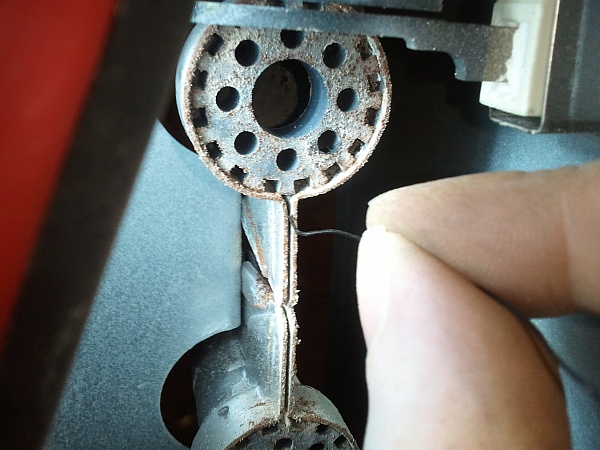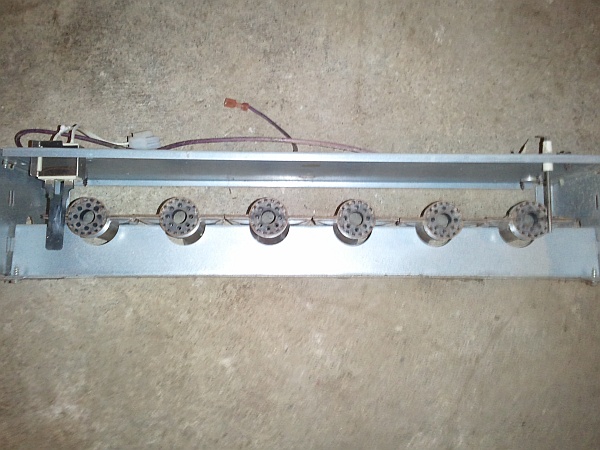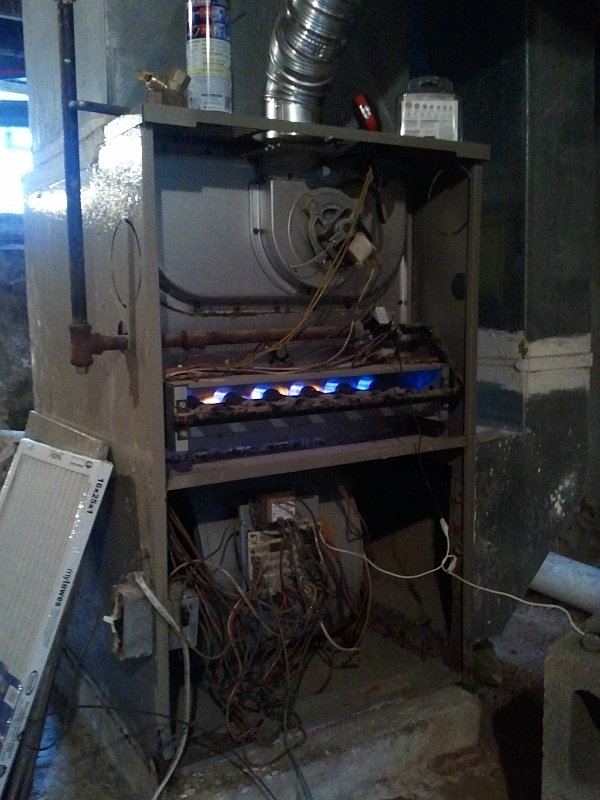Having recently bought a house which was built more than a century ago, I have inherited a fascinating mix of various technologies used from the 1890s to the present — from sections of the basement that look suspiciously like old coal bins to modern appliances and a 50Mb/sec Internet connection.
One of the not-so-attractive bullet points on the house was the use of baseboard heat throughout. While it’s no doubt effective, the general consensus seems to be that it’s just about the most expensive way to heat a building, short of burning actual hundred-dollar-bills in a fireplace.
When I toured the house, however, I noticed an ancient-looking gas furnace in the basement. Would it still work? No way to tell, but the Realtor and I put a clause in the contract to leave the furnace and ductwork in place.
Perhaps it could be restored, and if nothing else, it would be an interesting objet d’art to add to the existing basement ambiance (sort of a cross between a medieval dungeon, a mineshaft, a wine cellar, and a forgotten Dwarven ruin, complete with bizarre, ancient machinery.)
Now that the weather has cooled to a more-or-less reasonable temperature, I was finally able to take a weekend and look at the furnace. First, using a “suicide cord,” I hotwired the inducer fan to test it. It was frozen in place, but a bit of WD-40 and several minutes of working the fan back and forth freed it enough so that the motor could keep it moving. It freed itself up quickly enough after that.
Now that the inducer fan was working, the blower fan was next on the list to be tested. Since it’s a type of motor I’m not familiar with, I decided to try running it through the main control panel. A quick check online came up with the decoder chart for thermostat wiring: Red for 24VAC power; green for the fan, and white for heat. I shorted red to green, applied power, and the main blower started right up — probably for the first time in many years.
Next, the furnace had to be reconnected to the gas line. This was surprisingly easy; Lowe’s had a kit with almost everything needed in one box. Apart from a second trip back for a 3/4″ pipe fitting, the gas line connection problem was solved, and the furnace was reconnected to the branch that had once served it.
The first test-firing displayed a complete lack of anything resembling fire (except for the hot surface igniter, which lit up nicely). A quick check with a voltmeter showed that the gas valve wasn’t getting any power. Hotwiring it to the 24VAC transformer solved the problem, and the gas came on. Well, the first burner did, at least.
Another check online (Google knows everything, or knows someone who does) came up with the explanation that the flame front should propagate from one burner to the next along the “wings” of the burners. If this wasn’t happening, the slots are probably clogged and require cleaning.
When I got the burner assembly out (not trivial, but a lot easier than I thought), it was immediately obvious that it was badly in need of a cleaning.
Burners in gas furnaces incorporate a safety mechanism, involving a thermocouple. The hot-surface igniter is placed next to the burner on one end of the row. Ideally, this burner ignites and the flame front propagates along the row, all the way to the last burner. There, a thermocouple is placed in the path of the last burner’s flame. If this thermocouple detects a flame, the burners have been properly lit, and the furnace can keep the gas on. Otherwise, after two or three ignition cycles, the gas is cut off and the LED flashes an error code. This prevents the furnace from flooding the basement with unburned natural gas.
Once the assembly was back in place, all six burners started up nicely.
The next question was, why wasn’t the gas valve getting 24VAC from the control board? Tracing back from the valve, it turns out that two of the switches had failed (most likely from rust.) Wiring around them (temporarily) solved the problem.
The power feed was a mess, so I replaced it with a new switch and ran a power cord back to an GFI outlet below the breaker panel as a semi-permanent solution (with all of the baseboard heat installed, the 200-amp panel was already completely full!)
The next step (and probably harder) will be to trace where all of this ductwork goes. Most of it has been hidden underneath the flooring or behind drywall. But that’s a story for another time…

